Idea by
Alexandra Sonnemans & Caterina Viguera
rotative studio
Call for ideas 2020
To experience and imagine future architecture on-site 1:1
To experience and imagine future architecture on-site 1:1
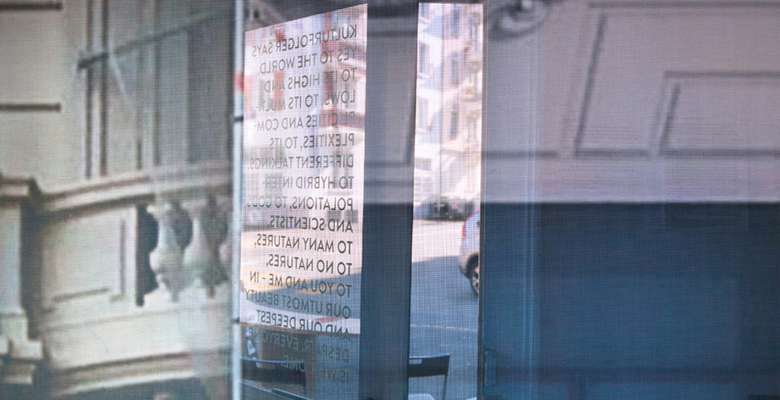
- New alliances
By presenting the findings of our research project, we would like to share our idea of using the construction site as a new experienceable dimension of architecture, that makes the development of the public space more accessible, democratic and inclusive.
Within the city in transformation we find a wide range of real-scale simulations that are used to announce future developments to the public. These temporary infrastructures appear on-site when the process of design is done and the first step towards building starts.
Their use and combination offers possibilities to imagine and test a future building in relation to the present surroundings. Using them in a much earlier stage of the process, not only to announce, but to debate, design and collectively imagine, can turn them into better tools for everybody involved; architects, city planners, developers and citizens.
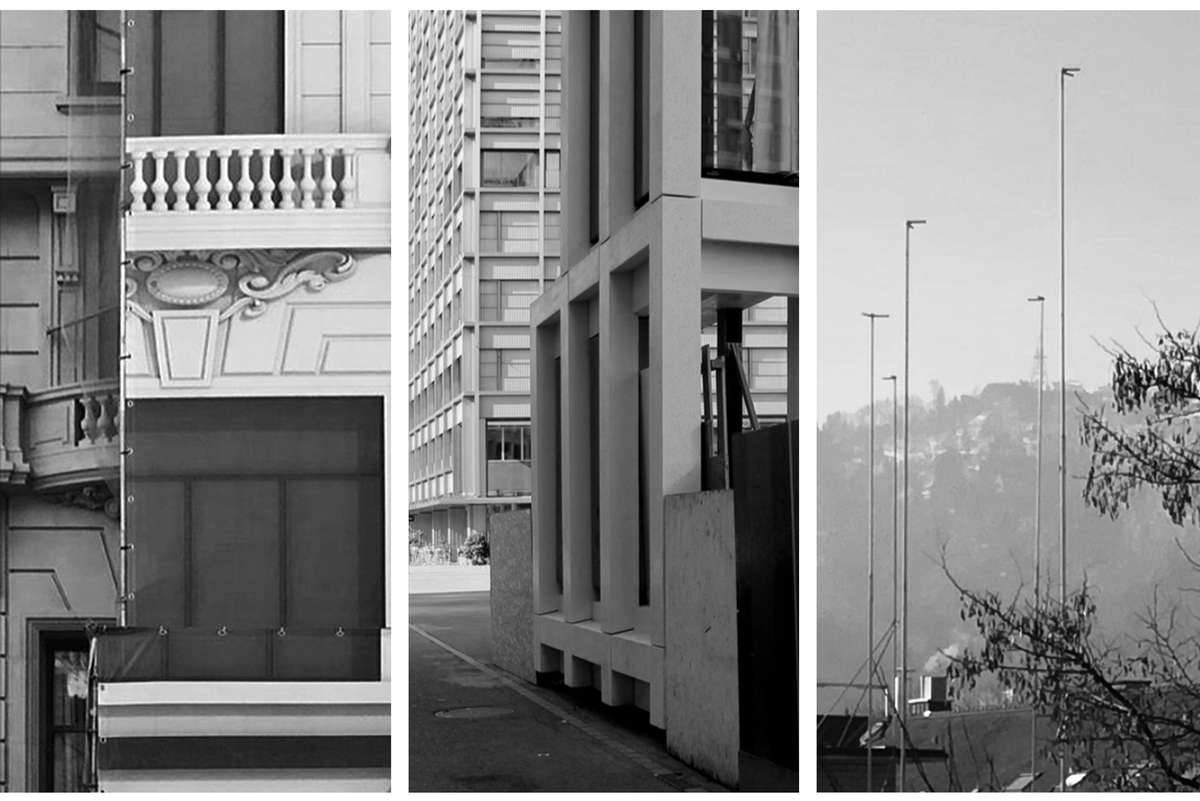
These are the main three main examples of simulation methods that are used, on site and in real scale, to help the public envisage of a proposed development. Balancing between visible and invisible, they become a new experiential dimension of architecture in which we recognise, imagine and create multiple interpretations of the proposed development in relation to the existing environment. From left to right: printed textiles or ‘Replicas’, Mock-ups or ‘Fragments’ and Baugespann or ‘Contour’.
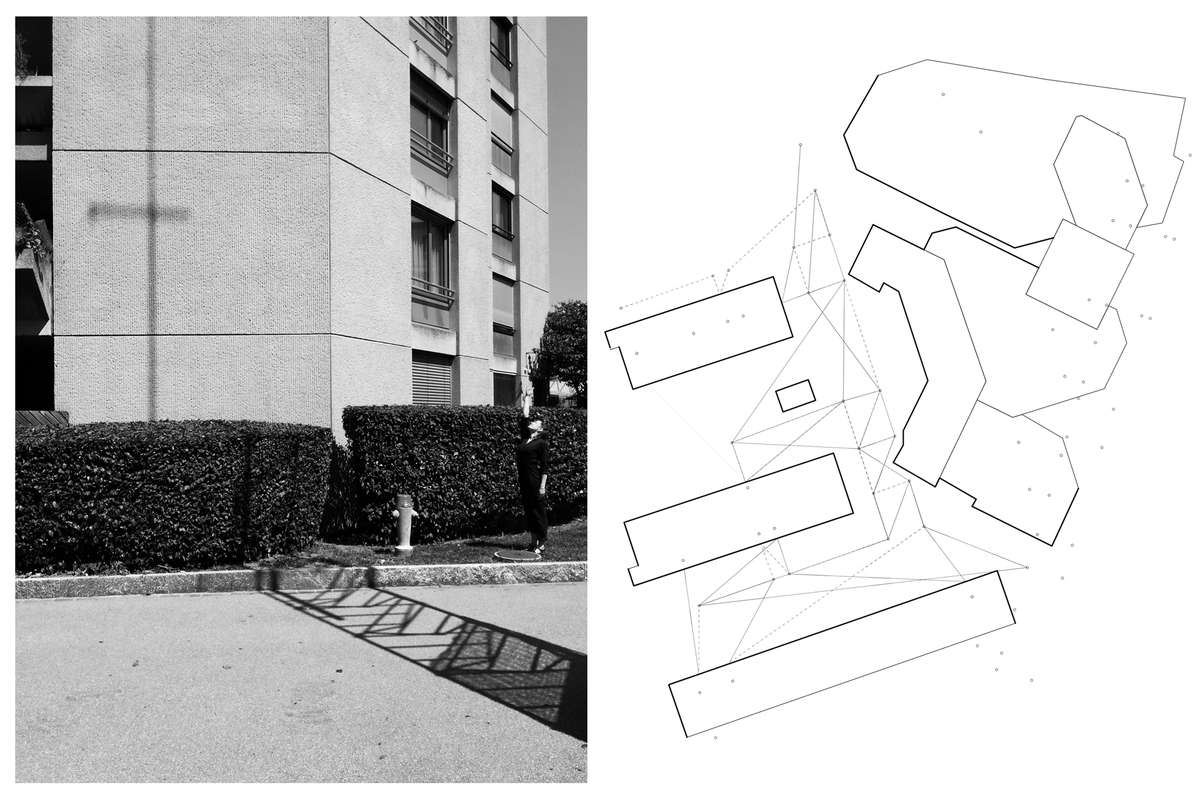
During 2019 we invited various guests from the performative arts to go on site with us. Together with dancer Emma Hoette from London we explored the fysical experience and readability of the Swiss simulation method ‘Baugespann’. A Baugespann marks out the contour of a new building, by placing aluminum poles on each (future) corner of a building, within the present context. In certain cases, there are still buildings present, wherethrough future and present coincide, or collide.
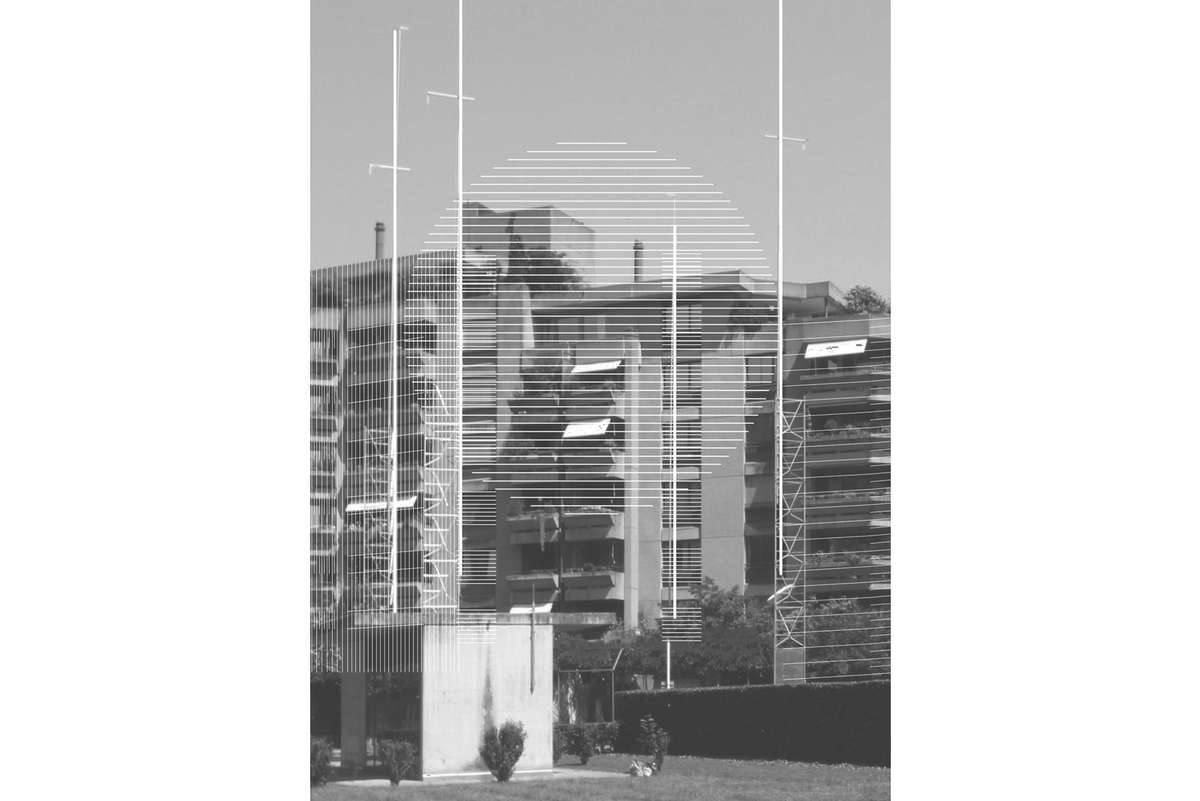
Through a series of drawings of volumes, surfaces and spaces, we created multiple interpretations of what is to come. First we took the existing context into account, next we considered the 1:1 simulations more solitary and played within a set of rules that we imposed ourselves. The drawings/interpretations address concepts such as volume and void, body and space and experiment with ways of coinciding, colliding and connecting present and future.
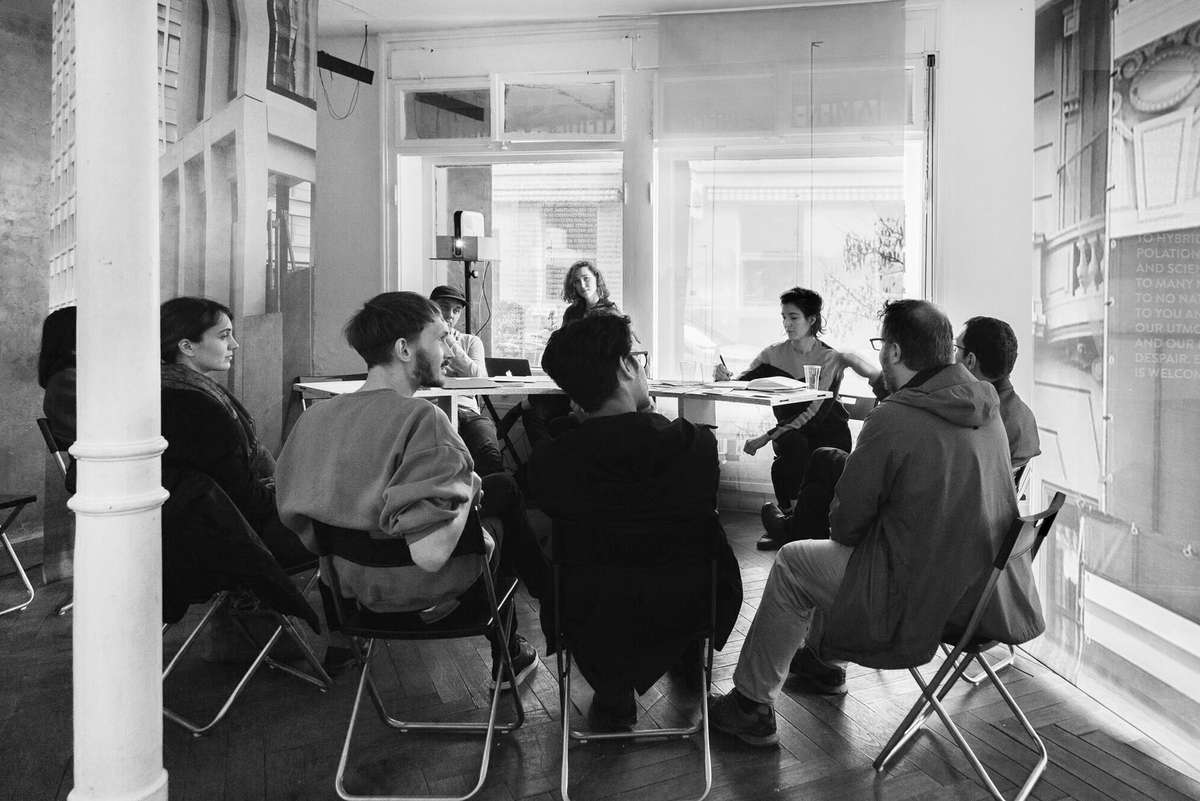
During 2019 we have been invited for a residency in Kulturfolger (www.kulturfolger.ch), Zürich, to share our research with a new and wider audience. The residency became a context for experimentation, inclusive debate and critical reflection. This picture shows the second of five round tables we organised in 2019, with a multidisciplinary group of theorists, practitioners and students from the architectural and artistic field.
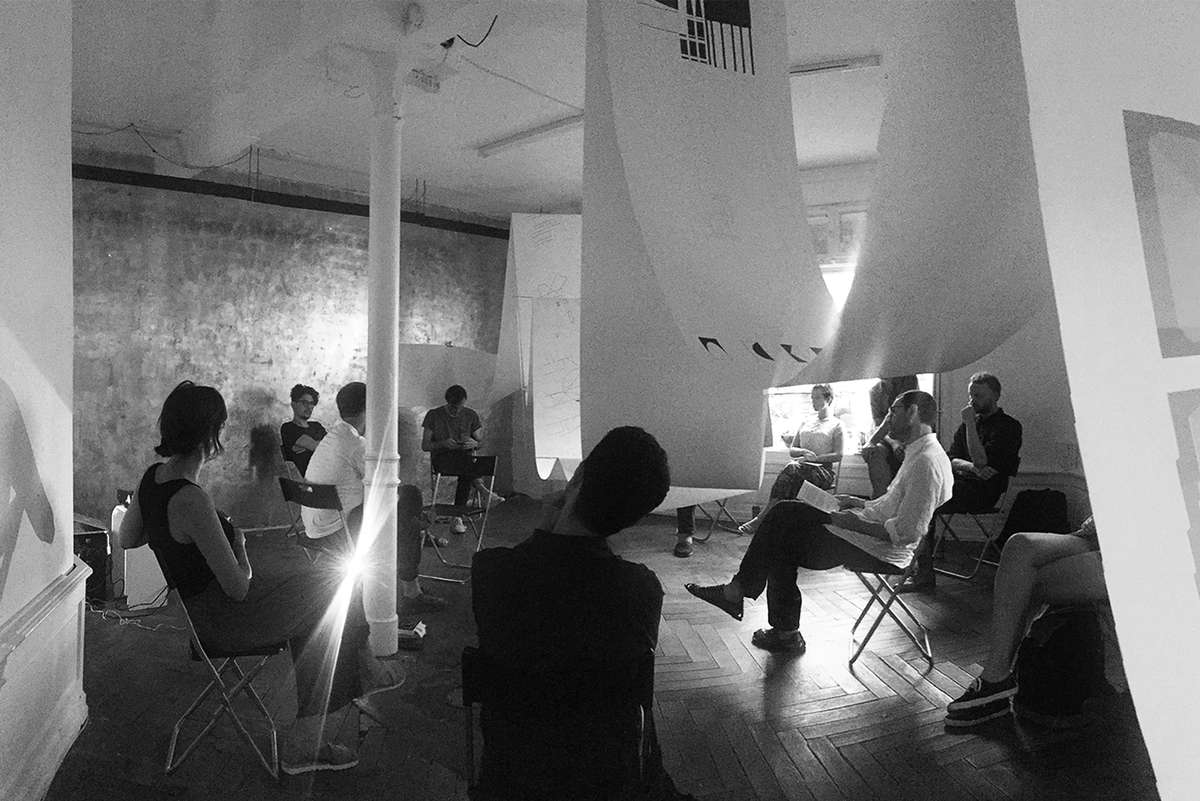
This is one of the eight public presentations organised during 2019 in Zürich. Titled ‘Continuum’, the 20 meter-long spatial installation contains a set of drawings made on-site to interpret the topic of research: these are abstractions in different categories (lines, surfaces, projection of shadows and volumes) to better understand the simulation tools and how the transformation will affect the present context. Floating in the space, the installation invited the audience to interact and play.
To experience and imagine future architecture on-site 1:1
To experience and imagine future architecture on-site 1:1

- New alliances
By presenting the findings of our research project, we would like to share our idea of using the construction site as a new experienceable dimension of architecture, that makes the development of the public space more accessible, democratic and inclusive.
Within the city in transformation we find a wide range of real-scale simulations that are used to announce future developments to the public. These temporary infrastructures appear on-site when the process of design is done and the first step towards building starts.
Their use and combination offers possibilities to imagine and test a future building in relation to the present surroundings. Using them in a much earlier stage of the process, not only to announce, but to debate, design and collectively imagine, can turn them into better tools for everybody involved; architects, city planners, developers and citizens.
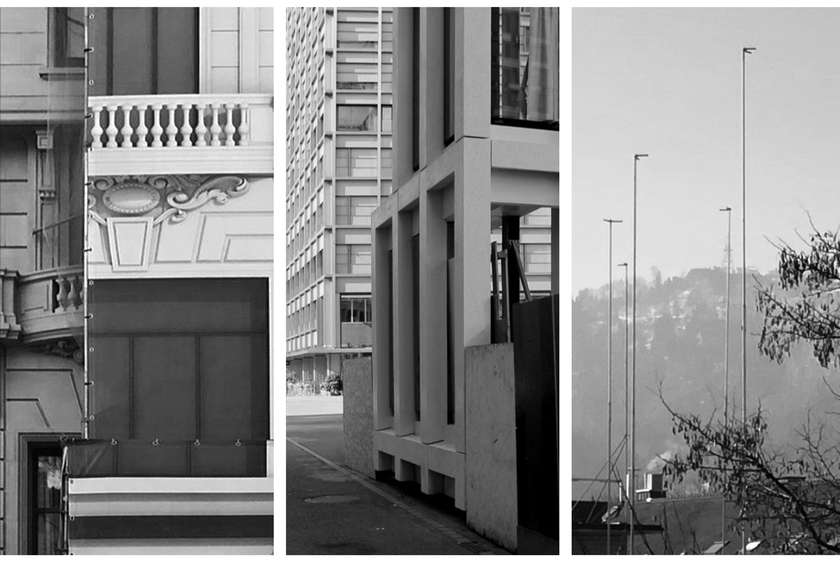
These are the main three main examples of simulation methods that are used, on site and in real scale, to help the public envisage of a proposed development. Balancing between visible and invisible, they become a new experiential dimension of architecture in which we recognise, imagine and create multiple interpretations of the proposed development in relation to the existing environment. From left to right: printed textiles or ‘Replicas’, Mock-ups or ‘Fragments’ and Baugespann or ‘Contour’.
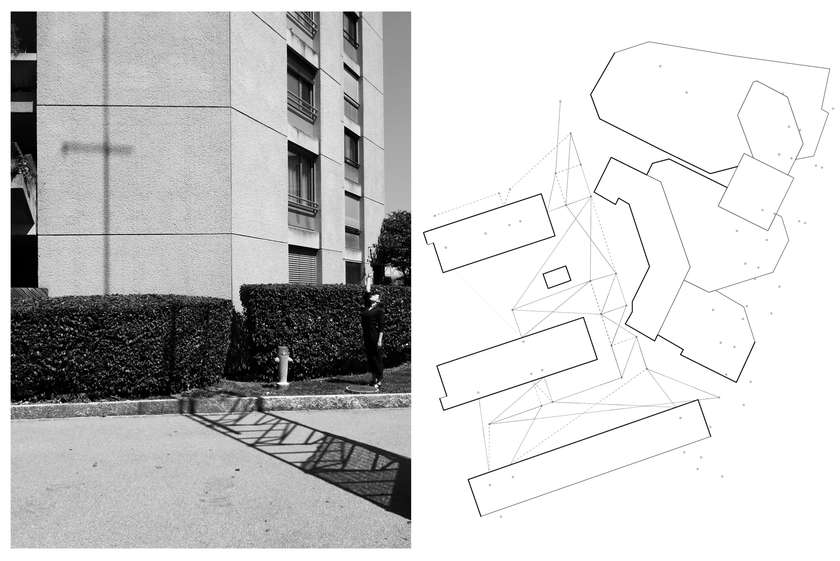
During 2019 we invited various guests from the performative arts to go on site with us. Together with dancer Emma Hoette from London we explored the fysical experience and readability of the Swiss simulation method ‘Baugespann’. A Baugespann marks out the contour of a new building, by placing aluminum poles on each (future) corner of a building, within the present context. In certain cases, there are still buildings present, wherethrough future and present coincide, or collide.
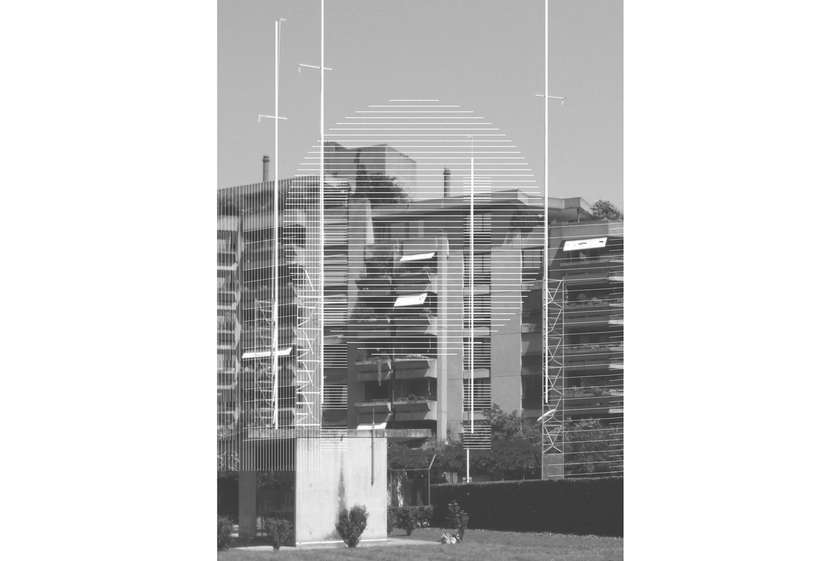
Through a series of drawings of volumes, surfaces and spaces, we created multiple interpretations of what is to come. First we took the existing context into account, next we considered the 1:1 simulations more solitary and played within a set of rules that we imposed ourselves. The drawings/interpretations address concepts such as volume and void, body and space and experiment with ways of coinciding, colliding and connecting present and future.
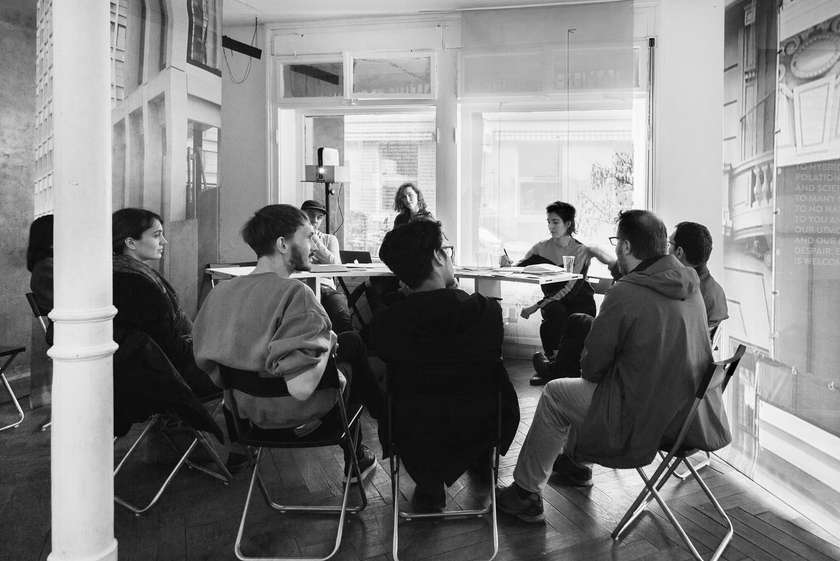
During 2019 we have been invited for a residency in Kulturfolger (www.kulturfolger.ch), Zürich, to share our research with a new and wider audience. The residency became a context for experimentation, inclusive debate and critical reflection. This picture shows the second of five round tables we organised in 2019, with a multidisciplinary group of theorists, practitioners and students from the architectural and artistic field.
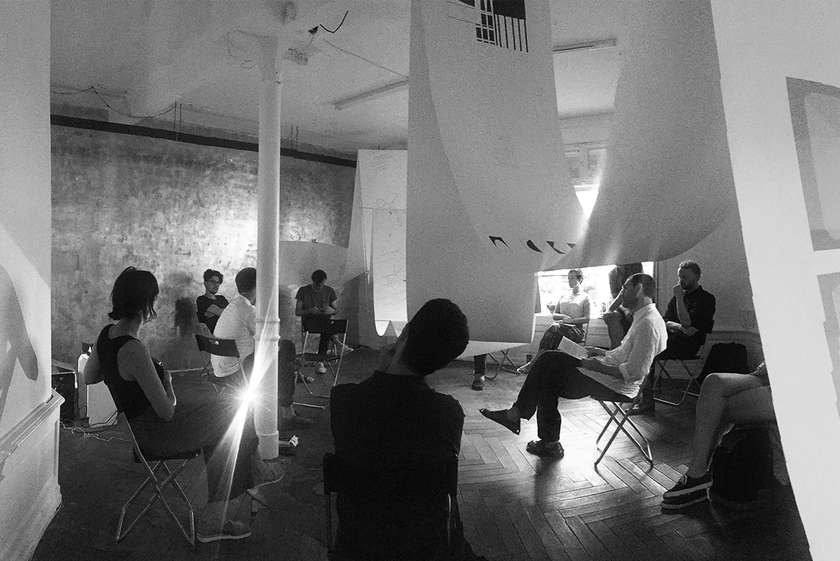
This is one of the eight public presentations organised during 2019 in Zürich. Titled ‘Continuum’, the 20 meter-long spatial installation contains a set of drawings made on-site to interpret the topic of research: these are abstractions in different categories (lines, surfaces, projection of shadows and volumes) to better understand the simulation tools and how the transformation will affect the present context. Floating in the space, the installation invited the audience to interact and play.